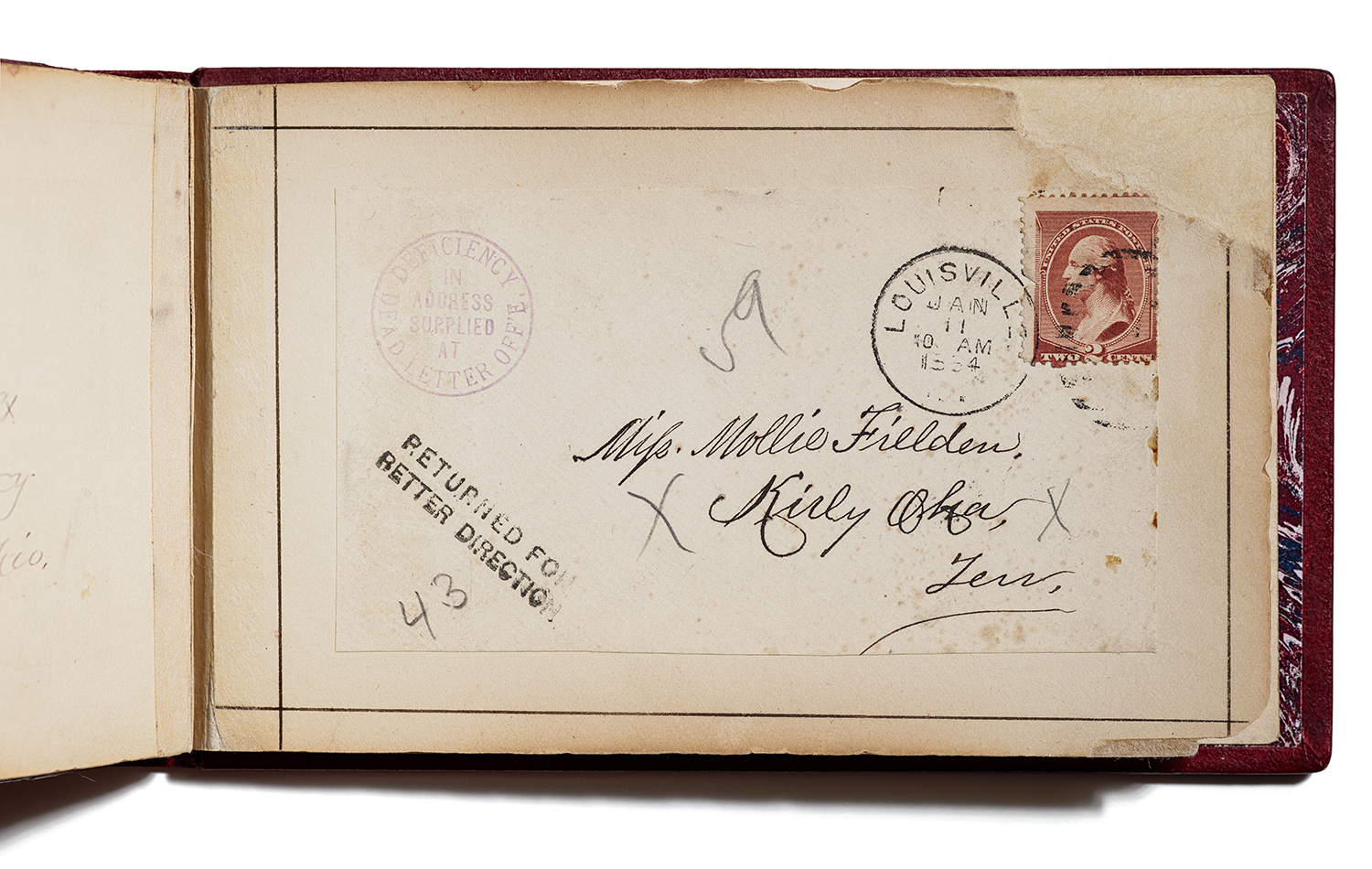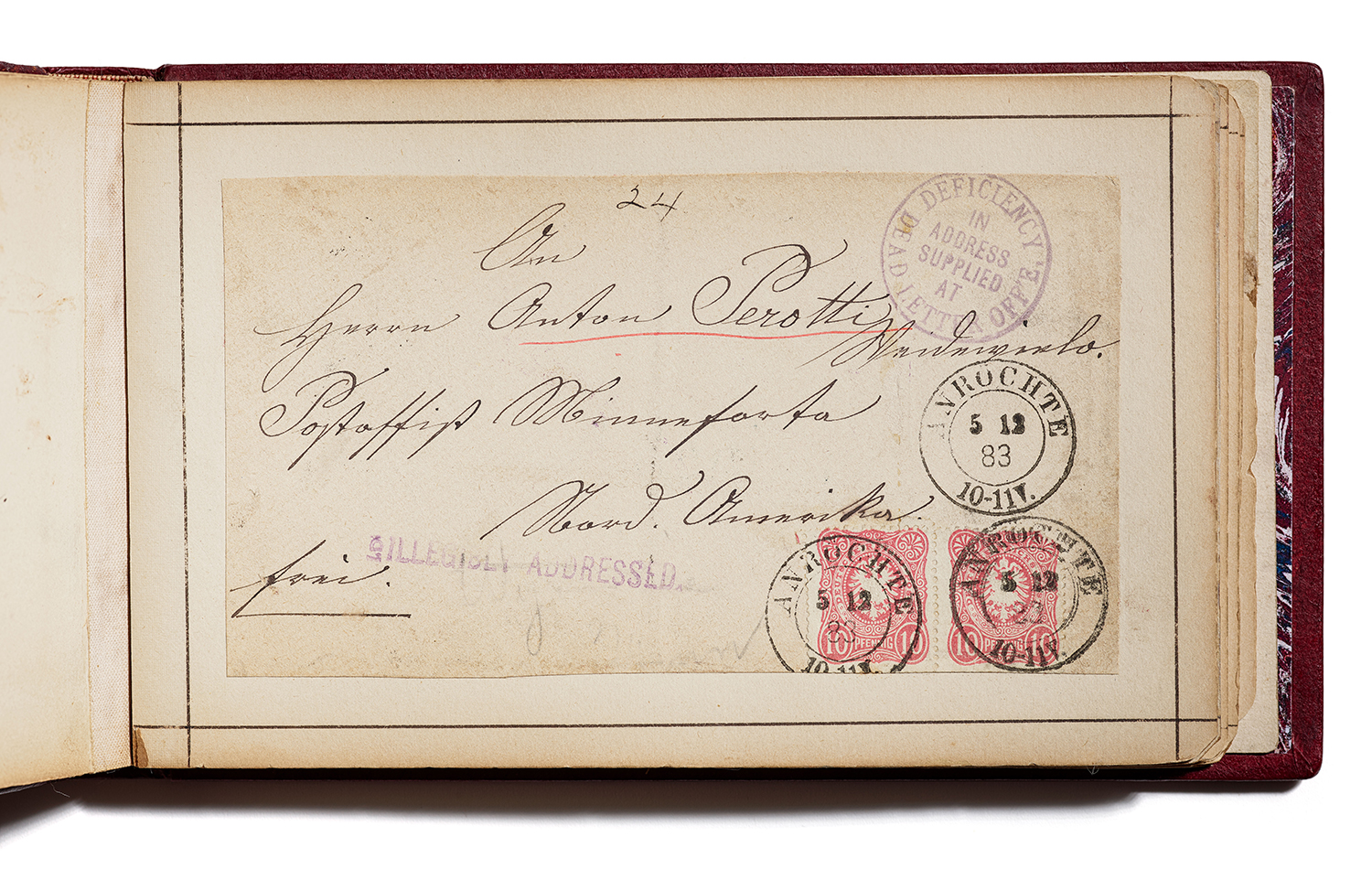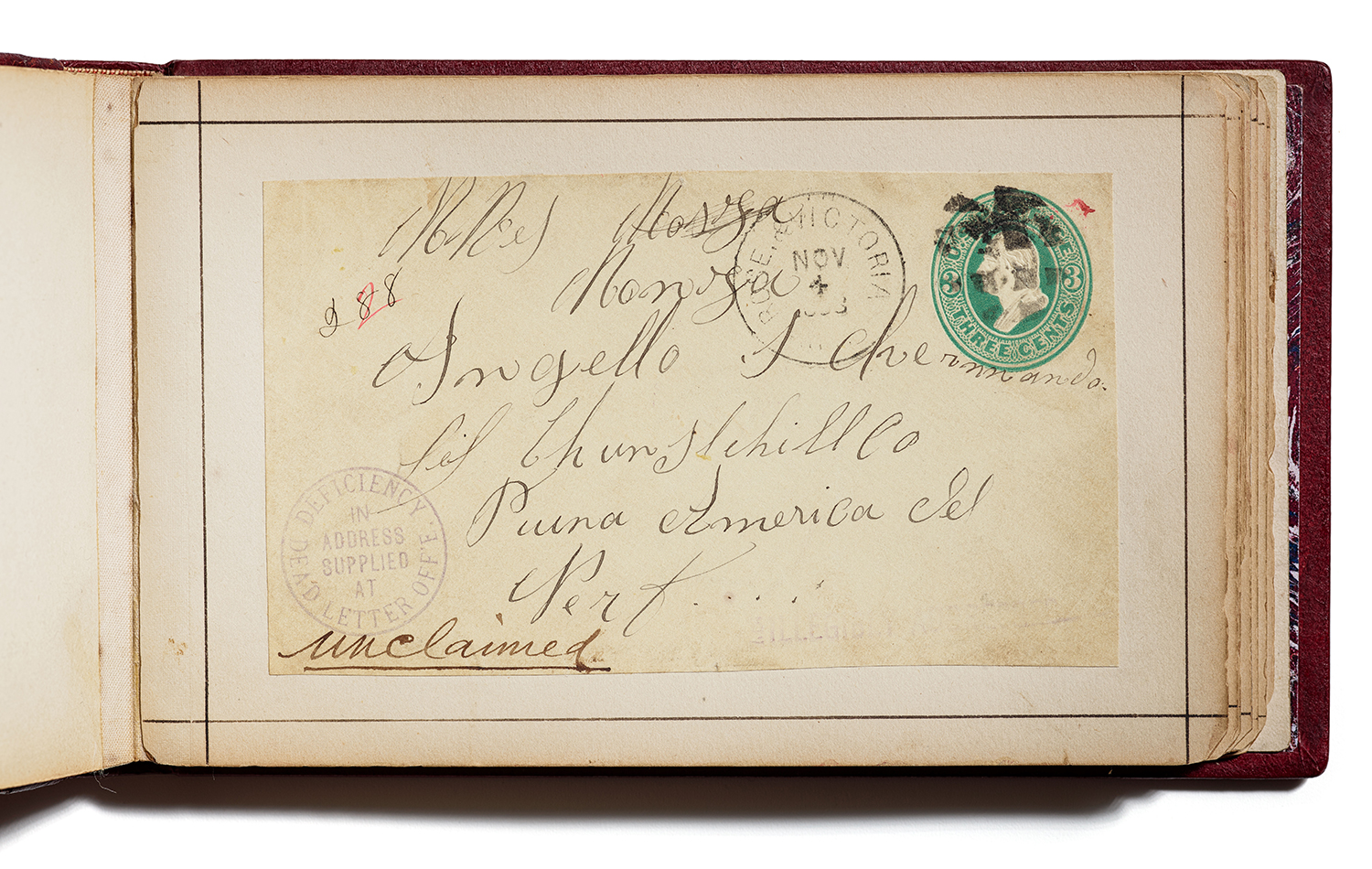Not the typical address book, this album contains examples of addressed envelopes that did not make it through the regular mail stream. With their intended destinations practically obscured, postal clerks directed letters like these to the Dead Letter Office. There, specially trained clerks would carefully work to decipher the nearly illegible handwriting, the scant information, and the simply incorrect or missing addresses. Such challenging addresses were termed blind readings.

This red, leather-bound scrapbook entitled "Blind Reading" was assembled after 1883. It contains twenty-one clippings from the front of envelopes postmarked between 1883 and 1884. The missing back cover may indicate that additional pages and envelopes were also lost prior to 1984 when the album came into the collection of the National Postal Museum. The envelopes inside bear markings of "illegibly addressed," "misdirected," "returned for better direction," and "unclaimed" which show how they landed in the Dead Letter Office. Each has the additional mark "deficiency in address supplied at Dead Letter Office" that proves these mysteries were solved. When clerks cracked a particularly challenging mail mystery, they forwarded the mail along with a letter requesting that the envelope be returned for the Dead Letter Office's collection. With the envelope pasted into the album, the correctly decoded address was written on the reverse page, like the answers to a trivia game.

From mystery addresses and deficient postage to unclaimed items, mail that was undeliverable fell to the care and handling of the Dead Letter Office. For most of the nineteenth and twentieth centuries, the Dead Letter Office functioned to ensure all measures were taken to uphold the bargain that postage paid resulted in delivery of the mail piece. As with the envelopes in this scrapbook, clerks worked first to glean any information available on the wrapper. However, discovering the addressee or revealing information to return it to the sender sometimes necessitates opening the mail. Only the clerks of the Dead Letter Office had permission to open letters and packages. Even then, regulations allowed them only to read the bare minimum to find names and locations of the sender and intended recipient. In addition to ethics and reasoning skills, the work required knowledge of languages and geography to interpret the mail of America's immigrant populations.

For items that were never claimed or could not be delivered, postal workers oversaw their disposal. That included the destruction or recycling of paper from letters and wrappers. Clerks also meticulously tallied the totals for enclosed money and turned the funds over to the Treasury Department. Contents of packages were held for a period then sold at public auction. Items that remained were destroyed or collected by the Dead Letter Office as curiosities. Today Mail Recovery Centers fulfill the responsibilities formerly performed by the Dead Letter Office.
For further reading
Written by Lynn Heidelbaugh
Additional Imagery




